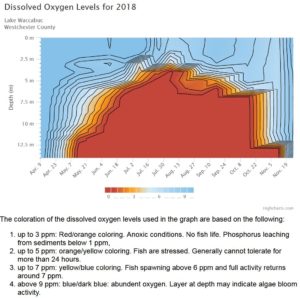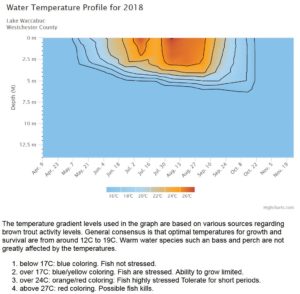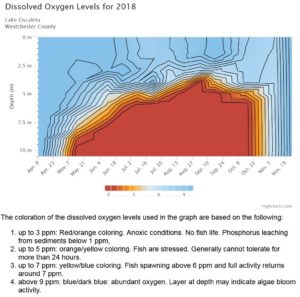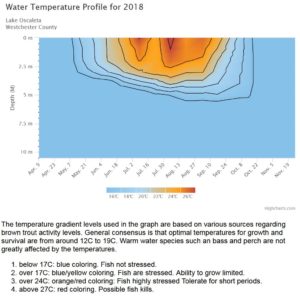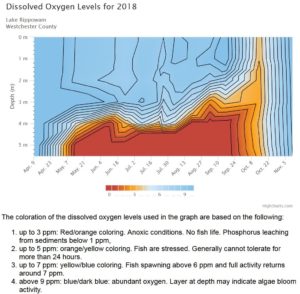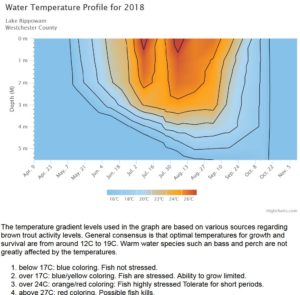The amount of dissolved oxygen in lake waters can indicate the quality of lake water and habitat. The colder the water, the more oxygen can dissolve in the waters. Sometimes water becomes supersaturated because algae is growing and giving off oxygen. Sometimes water has much less oxygen than the temperature would allow. Hypoxia describes low amounts of oxygen, and anoxia describes no oxygen, both a result of bacterial activity on organic material that consumes energy to live: biological oxygen demand. Anoxia also allows phosphorus to enter lake waters from the sediment, contributing more phosphorus that can support plant and algae growth.
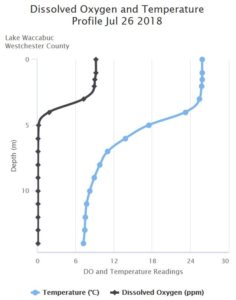 A profile of dissolved oxygen shows the dissolved oxygen and temperature throughout the water column, mostly shown at meter intervals. This chart shows an example for Waccabuc from the summer of 2018. The left side of the chart shows the depth of the water starting at the surface and going down to 15 meters, the maximum depth of the lake. The dissolved oxygen (DO) and temperature are plotted against the depth. Waccabuc is anoxic from 5 meters to the bottom, and the temperature differences indicate a strong density barrier to mixing.
A profile of dissolved oxygen shows the dissolved oxygen and temperature throughout the water column, mostly shown at meter intervals. This chart shows an example for Waccabuc from the summer of 2018. The left side of the chart shows the depth of the water starting at the surface and going down to 15 meters, the maximum depth of the lake. The dissolved oxygen (DO) and temperature are plotted against the depth. Waccabuc is anoxic from 5 meters to the bottom, and the temperature differences indicate a strong density barrier to mixing.
Since we take frequent DO profiles, we can combine the data to show what happens from the spring mixing, through stratification, to the fall mixing.
Thus, Waccabuc in 2018 shows no oxygen in waters from the bottom up above 5 meters, and temperatures to warm for trout from the surface down below 5 meters.
Oscaleta had a similar DO profile in 2018.
Rippowam isn’t as deep a lake, but still has an anoxic layer.
